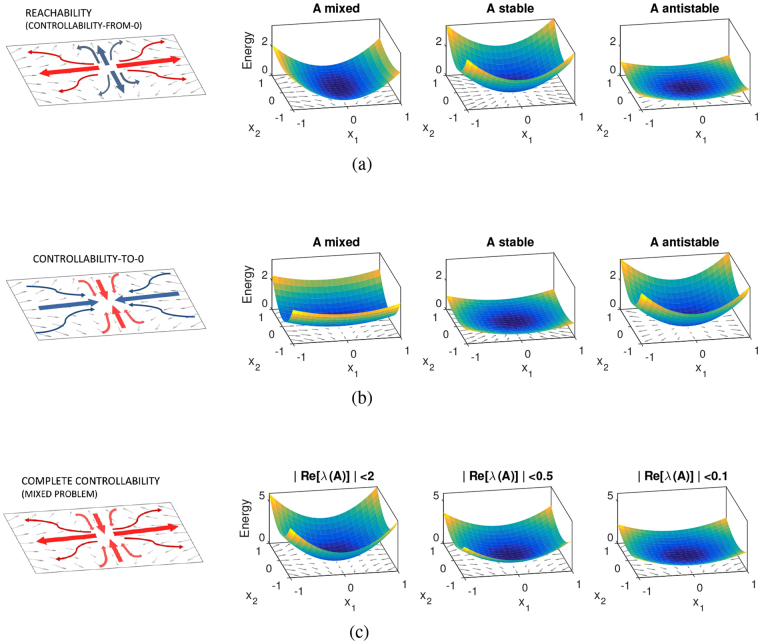Figure 1.
Reachability, Controllability-to-0 and Complete Controllability problems. (a) The reachability (or controllability-from-0) problem is difficult along the stable eigendirections of A (red curves in the leftmost panel) and easy along the unstable ones (blue). This is reflected in the surfaces of shown in the 3 rightmost panels. In particular, the reachability problem requires limited control energy when A is antistable (rightmost panel). (b) The controllability-to-0 problem is difficult along the unstable eigendirections of A (red) and easy along the stable ones (blue). The input energy surfaces, , reflect these properties. The case of A stable requires the least control energy. (c) The problem studied in this paper, complete controllability, is a mixture of the two cases, collecting the worst-case situations of both. When the real part of the eigenvalues of A is squeezed towards the imaginary axis as in the right panels of Fig. 2(a), the input energy reduces accordingly.

